Disclosure: This article contains affiliate links. We may earn a commission from purchases at no extra cost to you, which helps our travel content.
As someone who spends her days navigating the complex American legal system, there's something profoundly humbling about standing before structures that have witnessed centuries of human history. Beijing—a city where ancient imperial grandeur meets modern ambition—offers this perspective in abundance. Last fall, I convinced three of my closest friends to join me on a week-long journey through China's capital, trading legal briefs for a deep dive into dynasties that once ruled a quarter of the world's population. What began as a much-needed break from courtroom battles became an unexpected education in resilience, power structures, and cultural preservation that resonated deeply with my work as a public defender. This guide shares our path through Beijing's royal heritage, from the vermillion walls of the Forbidden City to the undulating spine of the Great Wall, with practical tips to help your group navigate this fascinating destination.
The Forbidden City: Heart of Imperial Power
The sheer scale of the Forbidden City hits you first—72 hectares of perfectly symmetrical courtyards, halls, and gardens designed to awe subjects and foreign dignitaries alike. As our group of four moved through the complex on a crisp October morning, I found myself analyzing it through both a traveler's and a lawyer's lens.
What struck me most was how the architecture itself served as a physical manifestation of power. The progression through increasingly restricted courtyards mirrors the way social hierarchies function—with access determined by proximity to authority. As someone who works daily with those often excluded from power structures, the symbolism wasn't lost on me.
We spent nearly six hours exploring, yet still didn't see everything. The most breathtaking moment came in the Inner Court, where emperors once lived with their families and thousands of servants. The Hall of Mental Cultivation, where emperors worked and ultimately selected their successors, particularly resonated with me—decisions made in that very room shaped the lives of millions across centuries.
For photography enthusiasts in your group, I highly recommend bringing a versatile zoom lens to capture both the architectural details and sweeping courtyard vistas. The dramatic lighting in late afternoon creates stunning shadows across the vermillion walls and golden roof tiles.

💡 Pro Tips
- Purchase tickets online in advance through the official Palace Museum website to avoid long lines
- Hire an English-speaking guide (arrange through your hotel or book online) for historical context that signage doesn't provide
- Enter through the Meridian Gate (south entrance) but exit through the Gate of Divine Prowess (north) to continue your journey toward Jingshan Park
Jingshan Park: The Emperor's View
After the sensory intensity of the Forbidden City, our group followed my carefully planned itinerary to Jingshan Park—an often-overlooked gem that offers what I consider the definitive view of Beijing. This artificial hill, constructed from the earth excavated to build the Forbidden City's moat, served as the imperial family's private garden and geomantic shield.
The 20-minute climb to Wanchun Pavilion at the summit rewards visitors with a panoramic perspective that contextualizes everything you've just experienced. Looking south, the entire Forbidden City unfolds like an architectural model, its symmetrical layout and yellow-tiled roofs demonstrating the deliberate planning that went into creating this seat of power. On clear autumn days (which we were fortunate to experience), you can see the modern city stretching to the horizon in all directions—ancient imperial design meeting contemporary urban planning.
What made this experience particularly meaningful for our group was the timing. We arrived about an hour before sunset, when the light bathes the Forbidden City in a golden glow. As the sun descended, we joined local seniors practicing tai chi and families enjoying the cooling evening air. This juxtaposition—imperial history below, everyday Beijing life around us—provided a moment of reflection on how spaces of former exclusion can transform into public resources.
I recommend bringing a compact binoculars to spot details across the cityscape. Our group took turns identifying landmarks and architectural features that would have been impossible to appreciate without magnification.

💡 Pro Tips
- Visit late afternoon for the best lighting and to see the Forbidden City bathed in golden hour light
- Enter from the north side if coming from Beihai Park, or from the south if exiting the Forbidden City
- The park requires a separate modest entrance fee (around 2-3 USD) that's well worth it
Temple of Heaven: Sacred Imperial Rituals
While the Forbidden City represented political power, the Temple of Heaven complex embodied something equally important: the emperor's spiritual authority as the intermediary between heaven and earth. Our group visited early on our third morning in Beijing, arriving just after the 8:00 AM opening to experience the grounds before the crowds descended.
The site's architectural precision is astonishing. The Hall of Prayer for Good Harvests—a magnificent wooden structure built without a single nail—sits atop a three-tiered marble base, its circular design and vibrant blue roof tiles representing heaven. As we walked the grounds, I explained to my friends how the emperor would process here each winter solstice to perform elaborate ceremonies ensuring agricultural prosperity for the entire nation.
What makes this complex particularly special is the surrounding park, where we witnessed Beijing's community life unfolding in real time. Elderly residents gathered for morning exercises, group singing, and traditional dance. Some practiced calligraphy using water brushed onto the pavement—ephemeral art that evaporates within minutes. As an advocate who believes deeply in public spaces that serve community needs, I found this modern use of imperial grounds particularly moving.
For those in your group interested in traditional culture, the Long Corridor areas often feature impromptu performances of Chinese opera. We spent nearly an hour listening to a group of seniors performing classical pieces, their passionate delivery transcending our language barriers.
The site is expansive, so comfortable walking shoes are essential. I was grateful for my walking shoes which provided all-day comfort while exploring the marble pathways and extensive grounds.

💡 Pro Tips
- Visit early morning (before 10 AM) to see local residents practicing tai chi, dancing, and playing traditional instruments in the surrounding park
- The Echo Wall near the Imperial Vault of Heaven allows whispered conversations between people standing at distant points along the wall—a fascinating acoustic phenomenon
- Purchase the through ticket that includes all sections rather than individual attraction tickets
The Great Wall at Mutianyu: Beyond the Tourist Crowds
No exploration of China's imperial heritage would be complete without experiencing the Great Wall—perhaps humanity's most ambitious architectural undertaking. After researching various sections accessible from Beijing, our group chose Mutianyu for its restored condition, manageable crowds (compared to Badaling), and stunning mountain scenery.
The two-hour drive from central Beijing transported us from urban density to rugged mountain wilderness. As a public defender accustomed to seeing how built environments shape human behavior, I was immediately struck by how the wall's design responded directly to the dramatic topography. Unlike modern infrastructure that often conquers landscape through brute force, the Great Wall follows the mountain ridgelines organically, creating a structure that's both militarily practical and visually harmonious with its surroundings.
We opted for the cable car ascent to maximize our time on the wall itself, though the more adventurous can climb the steps to tower 10. Once atop the wall, we spent nearly four hours walking between watchtowers, each offering a different perspective on the surrounding mountains. The section between towers 14-23 was my favorite—fewer visitors venture this far, allowing moments of relative solitude to absorb the wall's immensity and historical significance.
Fall proved ideal for our visit, with comfortable temperatures, clear skies that enhanced visibility, and mountainsides painted in autumnal hues of gold and crimson. For capturing these sweeping vistas, my smartphone gimbal proved invaluable for recording smooth video while walking along the sometimes uneven surface of the wall.
For the descent, two members of our group couldn't resist the toboggan slide—a somewhat incongruous but undeniably fun modern addition that carries visitors down the mountainside on a metal track. The rest of us took the cable car, enjoying aerial views of the wall snaking across mountain ridges into the distance.

💡 Pro Tips
- Book a private driver through your hotel or a reputable tour company rather than joining large group tours for a more flexible experience
- Arrive early (before 10 AM) to enjoy sections of the wall with fewer visitors
- Bring layers—the wall's elevation means temperatures can be significantly cooler than in Beijing, especially in autumn
Summer Palace: Imperial Escape from Beijing's Heat
On our fifth day, we ventured to the Summer Palace—the imperial family's seasonal retreat from Beijing's sweltering summers. While the Forbidden City impresses through formal grandeur, the Summer Palace captivates with its harmonious integration of architecture and landscape.
The complex centers around Kunming Lake, an artificial body of water created over centuries to serve as both a scenic element and reservoir for the city. As we strolled along the Long Corridor—a 728-meter covered walkway adorned with over 14,000 paintings—I was reminded of how privilege manifests in physical space. While ordinary citizens suffered through Beijing's summer heat, emperors and their courts enjoyed this manufactured paradise of gardens, pavilions, and cooling waters.
As someone whose professional life involves questioning systemic advantages, I couldn't help but see parallels to contemporary disparities in access to resources and comfort. Yet the Summer Palace's transformation into a public park represents a democratization of space that feels like progress—what once served a select few now belongs to everyone.
The marble boat pavilion particularly fascinated our group—a lakeside structure built by Empress Dowager Cixi using funds intended for modernizing the imperial navy. This architectural folly, designed to resemble a European steamship but constructed entirely in stone, stands as a physical embodiment of late Qing Dynasty priorities that ultimately contributed to the empire's decline.
We spent a delightful hour crossing the lake on a traditional wooden boat, gaining perspectives impossible from shore. For anyone in your group with mobility concerns, this boat ride offers an excellent alternative to walking the extensive grounds. I recommend bringing a packable sun hat as shade can be limited in certain areas, especially around the lake.

💡 Pro Tips
- Purchase through tickets that include access to all areas including Suzhou Street and the Tower of Buddhist Incense
- Allow at least 4-5 hours to explore properly—the grounds are massive
- Take the boat across Kunming Lake for unique perspectives and to rest tired feet
Final Thoughts
As our week in Beijing drew to a close, I found myself reflecting on how these imperial sites speak to universal themes of power, access, and cultural identity. What began as a history-focused trip evolved into something more profound—a meditation on how societies balance preservation of heritage with forward momentum. For travelers seeking to understand China beyond headlines, Beijing's imperial architecture offers an unparalleled window into the values and worldview that shaped one of humanity's longest-lasting civilizations. Whether you're tracing the dragon motifs that recur across sites or contemplating how spaces of former exclusion have transformed into public resources, Beijing's royal heritage rewards thoughtful exploration. As we boarded our flight home, my friends and I agreed: these ancient stones had much to teach us about building more just and beautiful spaces in our own time.
✨ Key Takeaways
- Visit imperial sites early morning or late afternoon to avoid crowds and experience better lighting
- Connect multiple sites in a logical geographic progression to understand their historical relationship
- Look beyond architectural grandeur to consider what these spaces reveal about power structures and access
- Allow time for serendipitous encounters with local life happening within historic spaces
📋 Practical Information
Best Time to Visit
September-October (fall) or April-May (spring)
Budget Estimate
$100-150 USD per day including accommodations, meals, transportation and entrance fees
Recommended Duration
6-7 days
Difficulty Level
Moderate





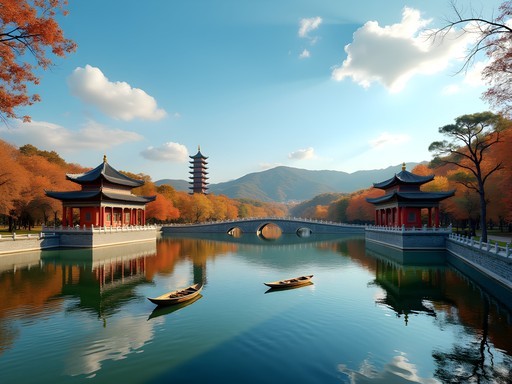


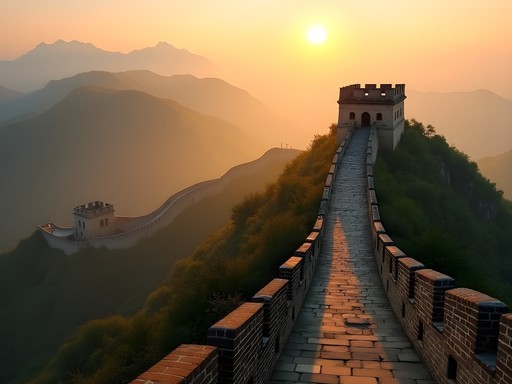

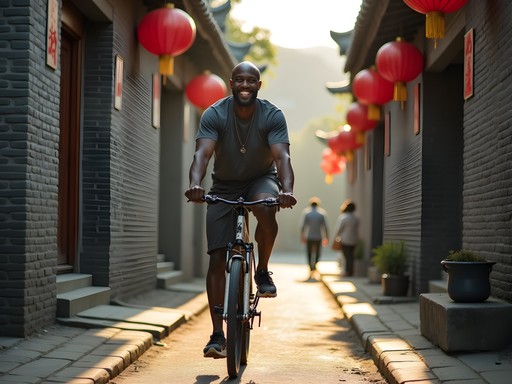
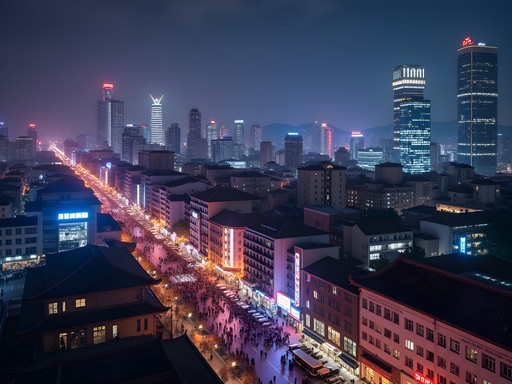

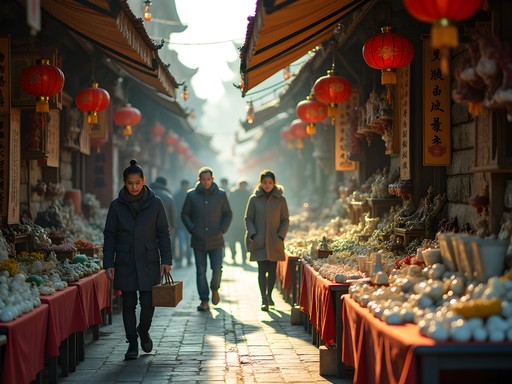


Comments
AsianCultureFan
Just got back from Beijing myself and your post captures the imperial grandeur perfectly. We also visited the Summer Palace which complements the Forbidden City beautifully - it shows the more relaxed side of imperial life. The boat ride on Kunming Lake was a highlight! One tip for anyone going to the Forbidden City: download the audio guide app beforehand. The stories about each building really bring the history to life.
Savannah Torres
Great suggestion about the Summer Palace! I wish I'd had time to visit. And yes, the audio guide is essential - there's so much history that's easy to miss without it.
Sage Dixon
Savannah, your experience at the Temple of Heaven brought back so many memories! When I visited in 2019, I arrived at 6am and found dozens of locals doing tai chi, playing traditional instruments, and practicing water calligraphy on the pathways. It felt like stepping into a living museum of cultural traditions. Did you try the echo stones near the Imperial Vault of Heaven? Standing on one and speaking creates this amazing acoustical effect that emperors once used to communicate with their advisors!
Savannah Torres
Yes! Those echo stones were incredible - such ingenious ancient engineering. And the morning activities were a highlight for me too. There was an elderly gentleman teaching a group of young children traditional kite flying when we visited. Those unplanned cultural moments end up being more memorable than the monuments sometimes.
islandclimber
Adding Temple of Heaven to my must-see list! Would you recommend getting a guide there or is it easy enough to understand on your own?
Sage Dixon
I'd say it depends on your interest level in the symbolism and history. The site itself is beautiful without explanation, but a guide really helps understand the cosmological significance of the layouts and rituals. I used the audio guide (around $5) and thought it was sufficient!
escapemaster
Your timing for the Forbidden City was spot on! We went last month and made the mistake of arriving at 10am - absolute madness with tour groups. Ended up spending 4 hours in crowds rather than appreciating the architecture. Wish I'd read your advice about the early morning entry before our trip! Did you find any good spots to escape the crowds inside?
Savannah Torres
Oh no! Yeah, those tour groups can really change the experience. The northeast corner gardens were surprisingly peaceful when we visited. Also, most tourists follow the central axis, so wandering the side courts and corridors usually gave us breathing room.
Sage Dixon
Pro tip: bring a good pair of walking shoes for the Forbidden City! I tracked almost 8 miles walking around there and Jingshan Park. I used my hiking shoes and my feet thanked me. Also, the Palace Museum's lesser-known Western section often has fewer visitors if you're looking for quieter spaces.
islandclimber
Great post! How did you get to the Mutianyu section of the Great Wall? I've heard it's less crowded but wondering about transportation options.
Savannah Torres
Thanks! We hired a private driver for about $80 round trip. Totally worth it for the flexibility. There are public buses too (916 express from Dongzhimen), but they take much longer and you'll need to switch to a local minibus at Huairou.
islandclimber
Perfect, thanks for the info! Might splurge on the driver since we'll have limited time.
globetrotter365
Love the photos from Jingshan Park! That panoramic view is incredible!
BeijingBound2025
Going to Beijing next month! How crowded was Mutianyu compared to Badaling? Trying to decide which section to visit.
Savannah Torres
Mutianyu was significantly less crowded than Badaling, especially if you go early (before 9am). You'll actually be able to take photos without strangers in every shot! The scenery is more dramatic too, in my opinion.
Taylor Moreau
I'd second Savannah's recommendation. Mutianyu is worth the extra travel time. If you're going in winter, bring proper footwear as it can get slippery. I use my hiking boots which have excellent grip on those ancient stone steps.
BeijingBound2025
Thanks both! Mutianyu it is then. And good call on the footwear - will definitely pack accordingly.
smartguide
Great post about Beijing's imperial sites! If anyone's planning a trip, I'd add that buying tickets online for the Forbidden City is essential now - they sell out days in advance and don't sell at the gate anymore. Also, the subway is incredibly easy to navigate and super cheap (like 30 cents a ride). We used it to get everywhere except the Great Wall.
photophotographer
Thanks for the ticket tip! I had no idea they don't sell at the gate anymore.
Taylor Moreau
Excellent write-up on Beijing's imperial heritage, Savannah. I travel to Beijing quarterly for business and always try to incorporate at least one historical site into each trip. For Mutianyu, I'd add that hiring a private driver for the day is worth every penny if you're on a tight schedule. The cable car option you mentioned is indeed the way to go - I've seen too many exhausted tourists regretting the hiking option! Also, if you're visiting the Temple of Heaven, the early morning tai chi sessions with locals are not to be missed.
Savannah Torres
Thanks for the additional tips, Taylor! I completely agree about the private driver - public transport is doable but can eat up precious time. I wish I'd known about the morning tai chi sessions!
wanderlustfan
Your post brought back so many memories! I visited the Forbidden City last summer and was completely overwhelmed by its scale. That tip about entering through the East Gate is gold - we did the same thing and avoided so much of the crowd. Did you get a chance to visit the Palace Museum's special exhibitions? The imperial jewelry collection blew my mind!
Savannah Torres
Thanks! Yes, the East Gate trick is a game-changer. I did see the jewelry exhibition - those intricate gold pieces were incredible. The craftsmanship is just mind-boggling when you consider the time period.
wanderlustfan
Right?! I kept thinking about how they created such detailed work without modern tools. Did you have a favorite section of the Forbidden City?
Savannah Torres
The Imperial Garden was my favorite - such a peaceful contrast to the grandeur of the main halls. Perfect place to decompress after all that walking!
Taylor Moreau
Savannah, I appreciate your insights on navigating these iconic sites. Having traveled to Beijing numerous times for business, I've found that many visitors overlook the importance of timing. The Forbidden City requires at least 3-4 hours for a proper visit, and the crowds thin considerably after 2pm. For those with limited time, I recommend focusing on the central axis buildings and the treasures in the Palace Museum. Regarding Mutianyu, while it is indeed less crowded than Badaling, consider visiting Jinshanling for an even more authentic experience if you can manage the additional travel time. The architectural differences between restored and unrestored sections there tell a fascinating story about preservation philosophy.
islandway
Thanks for the Jinshanling tip, Taylor! Adding it to my list for next time. How difficult is the hiking there compared to Mutianyu?
Taylor Moreau
It's moderately more challenging with steeper sections and less restoration, but nothing the average fit traveler can't handle. The views are worth the extra effort.
Venture X
Premium card with 2X miles, $300 travel credit, Priority Pass